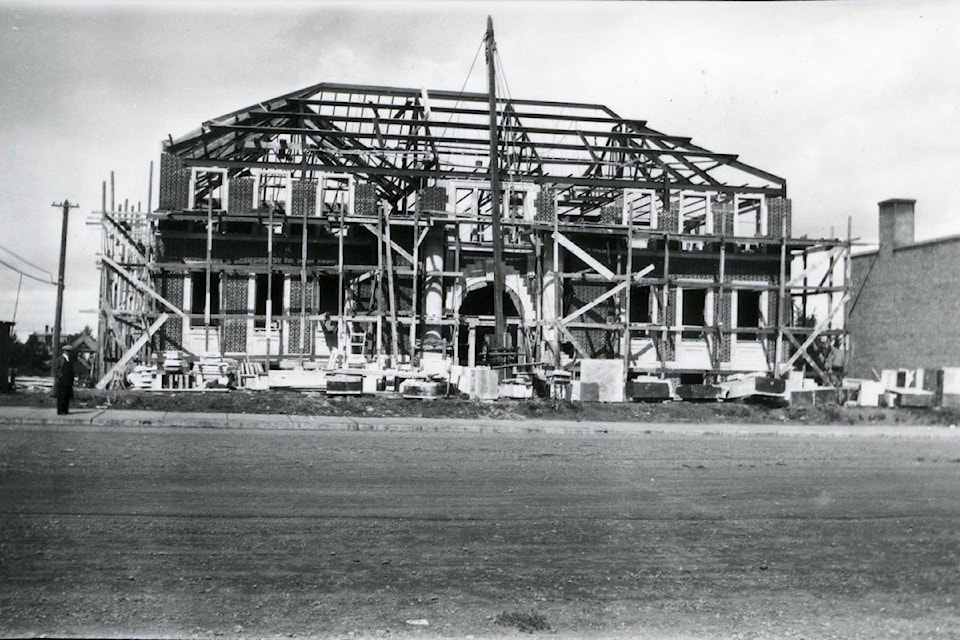At the end of October 1929, the New York stock market collapsed by nearly 25 per cent.
This precipitated the Great Depression, with the drying up of investments, a flood of business bankruptcies and soaring unemployment.
However, despite the drama of those historic events, the rural Prairie communities, such as Red Deer, initially did not feel much impact from the great crash.
One major reason was that few people in the community were involved in the stock market. The savings they had were either kept in bank accounts, or in such generally safe investments as government bonds.
More importantly, Red Deer and central Alberta had an agriculturally-based economy. While prices for farm produce and livestock initially fell in the wake of the stock market crash, by January 1930, they were only slightly below what they had been three months before in the mid-autumn of 1929.
Red Deer had been enjoying a construction boom in 1929 and many of those projects continued into 1930. Red Deer acquired four new business blocks, a Safeway grocery store, additions to two lumberyards and several new houses.
The Nazarene Church’s Northern Bible College was being constructed and new buildings were being erected by the provincial government at the Provincial Training School (now Michener Centre).
Alberta Government Telephones overhauled its service so that automatic telephones could be installed.
With an Alberta election pending, the provincial government pushed ahead with construction of a grand courthouse on the northeast corner of Ross Street and 49th Avenue.
Meanwhile, the City of Red Deer had purchased the local Western General Electric Company in 1926.
In 1928, it signed a very profitable long-term power supply contract with Calgary Power.
In January 1930, city council decided to share the profits of the new city utilities system.
Light and power rates were substantially reduced. However, this led to a major increase in consumption. With the much improved utilities revenues, city council was able to cut the tax rate by nine per cent.
Unfortunately, the worsening world economy began to pull the local economy down as well. Farm prices began to drop sharply until the price of wheat was only one-third of what it had been at the start of the year.
As local farmers stopped buying, local merchants saw their sales evaporate. A wave of business closures and bankruptcies followed.
As the 1929 construction projects drew to completion, there were virtually no new ones to take their place. Unemployment began to soar.
Conditions became so grim that a local bank was forced to borrow $3 from a customer when the man who had been cleaning the offices stated that he was “not prepared to extend credit on his account in the present business and financial situation.”
The city, provincial and federal governments adopted a number of schemes to try and reduce unemployment. A concrete bridge was constructed across Waskasoo Creek on Ross Street. A city water reservoir was constructed on the northeast corner of Michener Hill.
The federal government established unemployment relief (work) camps west of Rocky Mountain House.
Still, unemployment remained high and bankruptcies continued to grow. In 1932, the local economy hit bottom.
Wheat dropped to only 21 cents a bushel, while barley plunged to a mere 10 cents. Cattle prices dropped so low that their animals sold for less than the cost of shipping them to the Calgary livestock market.
The Alberta Provincial Police were disbanded and replaced locally with a detachment of the RCMP. The radio beacon for air traffic, which was located on the south side of Red Deer, was shut down by the Federal Department of Aviation.
In 1933, Red Deer’s only local radio station, CKLC, went permanently off the air.
Local unemployment was high, but the city was also swamped with transient job seekers. Red Deer’s chief of police at one point estimated that as many as 150 unemployed men per day were travelling through Red Deer looking for work.
Things slowly improved over the following years. However, the terrible Great Depression of the 1930s did not really end until the outbreak of the Second World War in 1939.
Red Deer historian Michael Dawe’s column appears Wednesdays.
